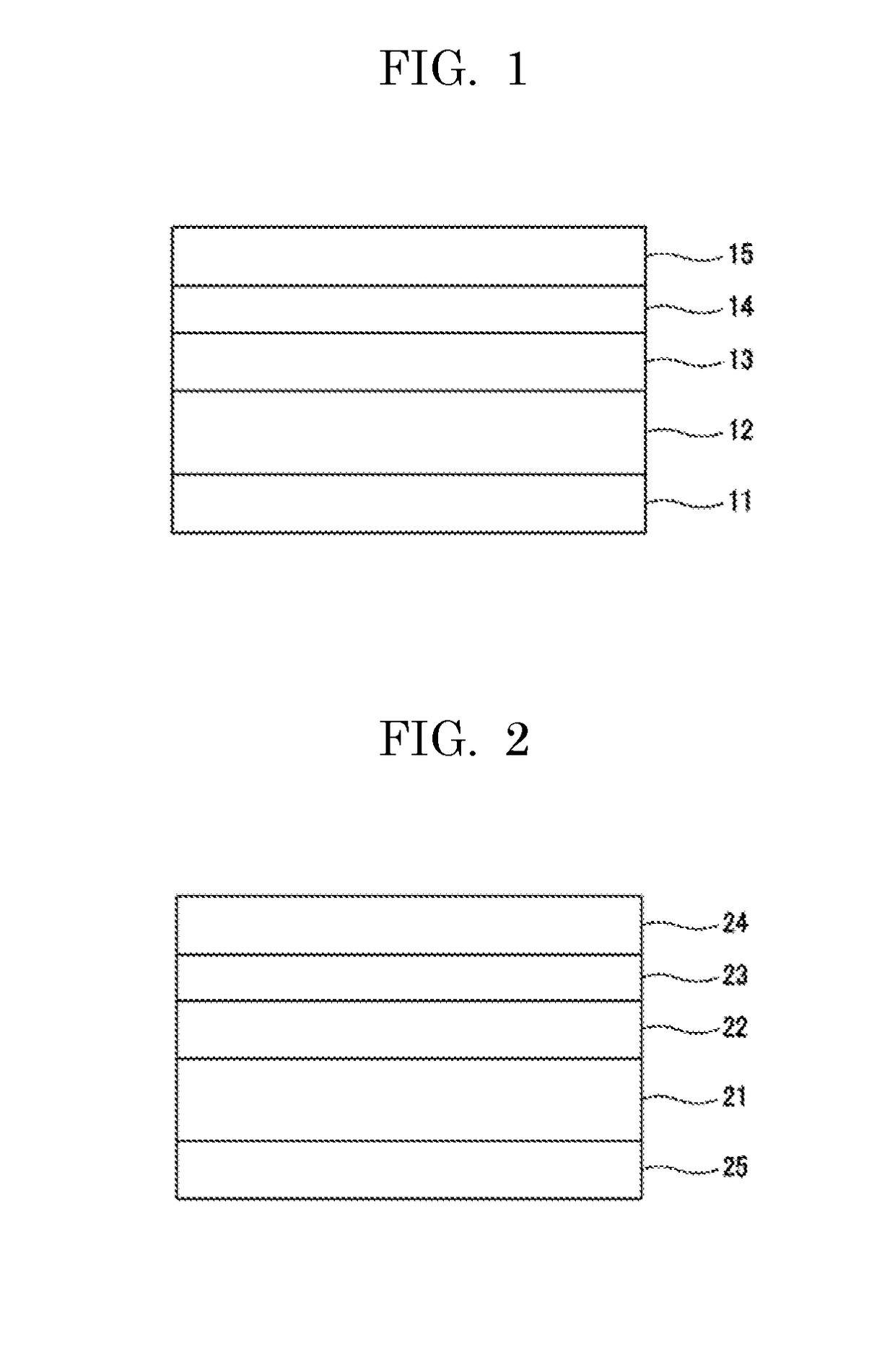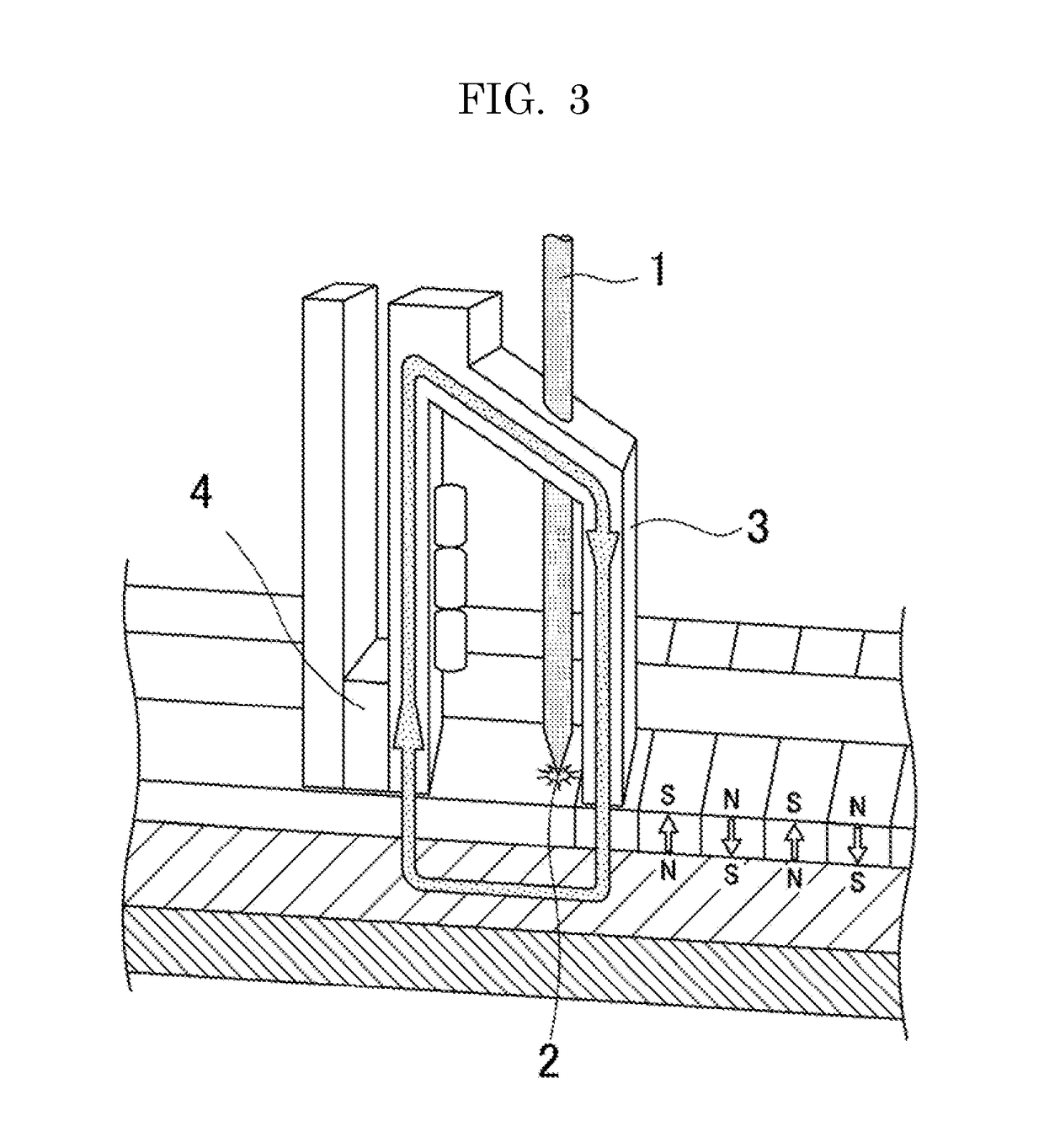Ionic liquid, lubricant, and magnetic recording medium
- Summary
- Abstract
- Description
- Claims
- Application Information
AI Technical Summary
Benefits of technology
Problems solved by technology
Method used
Image
Examples
example 1
Synthesis of TBD-C18H37-methyl trifluoromethanesulfonate
[0117]First, synthesis of 7-n-octadecyl-1,5,7-triazabicyclo[4.4.0]-5-decene (TBD-C18H37) is described.
[0118]TBD-C18H37 was synthesized with reference to the method of R. W. Alder et at (non-patent literature, Roger W. Alder, Rodney W. Mowlam, David J. Vachon and Gray R. Weisman, “New Synthetic Routes to Macrocyclic Triamines,” J. Chem. Sos. Chem. Commun. pp. 507-508 (1992)).
[0119]Specifically, sodium hydride (55% by mass hexane) was added at 10° C. to 8.72 g of 1,5,7-triazabicyclo[4.4.0]-5-decene (TBD) dissolved in dry THF, and the resultant mixture was stirred. With maintain the temperature at 10° C., bromooctadecane was added to the mixture by dripping over 20 minutes. Thereafter, the resultant was stirred for 30 minutes at 10° C., followed by stirred for 2 hours at room temperature. Thereafter, the resultant was heated to reflux for 1 hour. The resultant was then returned to room temperature, and an excessive amount of sodiu...
example 2
Synthesis of DBU-C18H37-methyl trifluoromethanesulfonate
[0128]First, synthesis of DBU-C18H37 is described.
[0129]DBU-C18H37 was synthesized with reference to the method of Matsumura et. Al. (non-patent literature, Noboru Matsumura, Hiroshi Nishiguchi, Masao Okada, and Shigeo Yoneda, “Preparation and Characterization of 6-Substituted 1,8-diazabicyclo[5.4.0]undec-7-ene,” J. Heterocyclic Chemistry Vol. 23, Issue 3, pp. 885-887 (1986)).
[0130]Specifically, 7.17 g of a raw material, which was 1,8-diazabicyclo[5.4.0]-7-undecene (DBU) was dissolved in a tetrahydrofuran (THF) solution, and the resultant solution was cooled down to 0° C. To the solution, 29 cc of n-butyl lithium having a concentration of 1.64 mol / L was added by dripping in an argon gas atmosphere, and the resultant mixture was stirred for 1 hour at 0° C. To the obtained solution, a solution, in which 15.71 g of octadecyl bromide was dissolved in THF, was added by dripping, followed by leaving the resultant mixture for 24 hours...
example 3
Synthesis of tris(trifluoromethylsulfonyl)methide trimethylstearyl ammonium salt
[0136]The synthesis scheme is presented below.
[0137]Tris(trifluoromethylsulfonyl)methide potassium salt (4.53 g) was dissolved in ethanol. To the resultant solution, a solution, in which 4.35 g of n-octadecyltrimethyl ammonium chloride was dissolved in ethanol, was added. The resultant was heated to reflux for 60 minutes, and then cooled. After the cooling, the resultant was added into distilled water to perform ether extraction. The organic layer was washed with distilled water. Thereafter, the organic layer was dried with anhydrous sodium sulfate. After removing the solvent from the organic layer, the resultant was recrystallized using a mixed solvent of n-hexane / ethanol, to thereby obtain a product. The obtained product was colorless crystals and had a melting point of 59.9° C. The TG / DTA of the product and the FTIR spectrum of the product are respectively depicted in FIGS. 8 and 9.
[0138]The absorptio...
PUM
 Login to View More
Login to View More Abstract
Description
Claims
Application Information
 Login to View More
Login to View More - R&D
- Intellectual Property
- Life Sciences
- Materials
- Tech Scout
- Unparalleled Data Quality
- Higher Quality Content
- 60% Fewer Hallucinations
Browse by: Latest US Patents, China's latest patents, Technical Efficacy Thesaurus, Application Domain, Technology Topic, Popular Technical Reports.
© 2025 PatSnap. All rights reserved.Legal|Privacy policy|Modern Slavery Act Transparency Statement|Sitemap|About US| Contact US: help@patsnap.com



